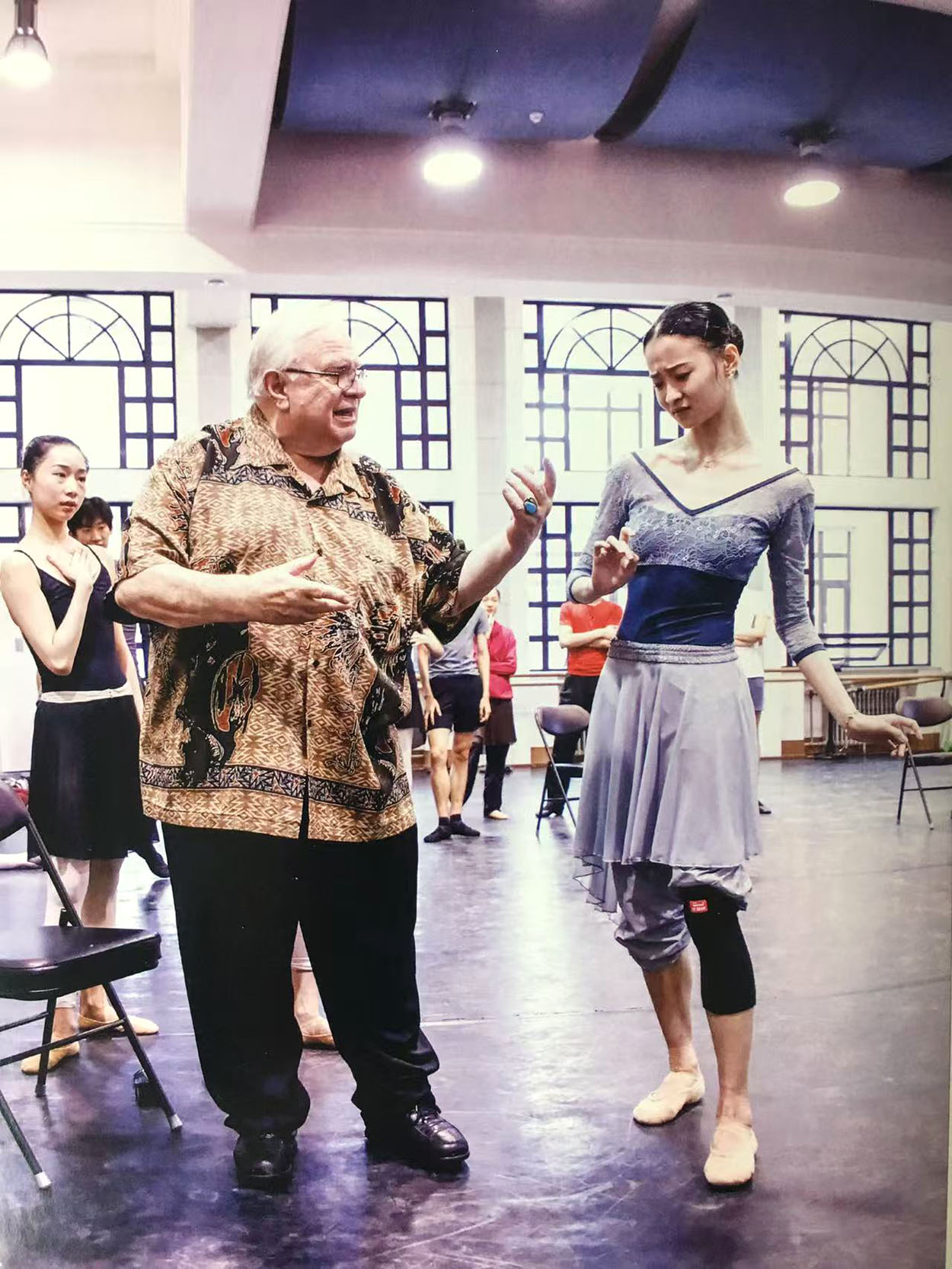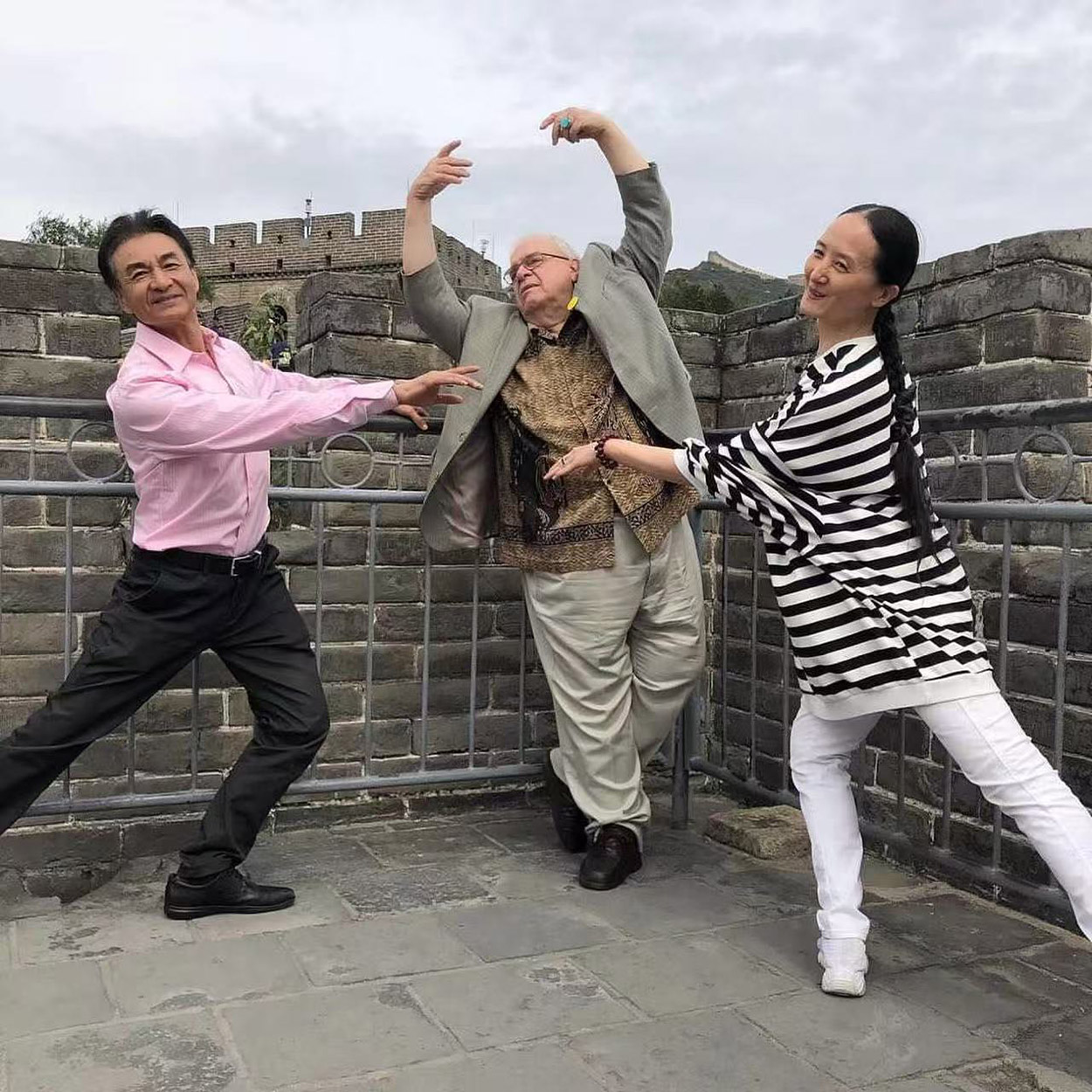Ben Stevenson reflects on decades of cultural exchange, heartfelt friendships

Editor's note: China Daily presents the series Friends Afar to tell the stories of people-to-people exchanges between China and other countries. Through the vivid narration of the people in the stories, readers can get a better understanding of a country that is boosting openness.
Ben Stevenson compared his first visit to China in 1979 to the ballet he choreographed for the National Ballet of China: just like Cinderella when she laid her eyes for the first time on the prince in the ballroom, he fell in love with China when he first saw her.
Stevenson, a Briton and recipient of the Officer of the Most Excellent Order of the British Empire for his great contribution to ballet, has had a long career.
He began his journey as a ballet dancer with the Royal Ballet in London, and shifted to the role of artistic director at the National Ballet of Washington, DC; Chicago Ballet; Houston Ballet; and Texas Ballet Theater since 1971. He has spent more than 50 years in the United States ballet world.
READ MORE: A new generation's take on an old classic
His connection with China started when the two countries established diplomatic relations. He was the artistic director at the Houston Ballet.
Turning 90 years old soon, Stevenson is not good with dates and numbers any more. He cannot remember exactly how many times he has visited China other than that he did "many times".
But he remembers, with fondness and tenderness, details of his many trips to China, such as the automatic curtain in a Beijing theater and a KFC fried chicken picnic on the Great Wall.
He remembers speaking to a monk in a monastery outside Beijing. The monk was 97 years old and was educated in Oxford many decades ago. He remembers he had a good laugh when crashing into a bus riding a brakeless bike in Beijing. He remembers a delicious lunch where the restaurant cooked fish he fished up.
Speaking to China Daily in Houston when he came from Fort Worth, Texas, to attend the opening of his The Sleeping Beauty by Houston Ballet, Stevenson walked down the memory lane.
The first trip to China was through Europe and took a couple of stops before landing in Beijing.
"We landed in a field in Beijing and they threw our bags out on the grass. We had to carry them into a hut. Now the Beijing airport is the most glamorous in the world," Stevenson said.
"But it was the best time because the simple things were the best and just amazing. It was in a way my most favorite time of going there, those first years at the beginning."
During that trip, Stevenson visited the Beijing Dance Academy and the National Ballet of China (then the Central Ballet Troupe). He made friends with legendary dancer Dai Ailian and then academy principal Chen Jinqing, and throughout the years, many others.
Stevenson gave a few lessons at the Beijing Dance Academy during his first visit. He went back to teach many times after that. He was deeply impressed and touched by students' technical caliber and their passion to learn the new techniques and ideas that he offered. In the end, he proposed to invite two students to Houston Ballet for a summer of training, thus beginning the first ballet dancer exchanges between the United States and China.
One of the students, Li Cunxin, became the first Chinese principal dancer at Houston Ballet. Later, Li Anlin, once with the National Ballet of China, was invited by Stevenson to join Houston Ballet in 1989 to be another principal dancer.
Li Anlin has worked with Stevenson for more than 30 years. When Stevenson left Houston Ballet to become the artistic director of Texas Ballet Theater in 2003, he invited Li to come with him and be the master of the troupe.
Stevenson misses his teaching time in Beijing. "When I was at the Beijing Dance Academy, at the end of two or three weeks of teaching, all the students in the class would have a little party," he said. "If someone came from some village, they'd play a little drum or someone else would sing a song. That was fabulous."
When it was Stevenson's turn, he sang a Chinese children's song, I love Beijing Tian'anmen, that he learned from Li Cunxin. "When I sang this song, they thought it was hysterical," Stevenson said.

Modern dance
Stevenson helped China develop its modern dance. "In the beginning, the Ministry of Culture said, what do you think we need now in dance, and I said choreography," Stevenson recalled.
"I said, you have to learn something about modern dance. They all laughed. The interpreter explained to me that to them, the word modern sounded like maodan in Chinesecat egg. That was a good laugh."
Stevenson began teaching choreography by asking each student to find a little piece of music and do something of their own.
"The first boy had a little piece of music and he came out with a sword and clocked a hero. The second guy came out with a sword and clocked it. Everyone was like a hero," he said.
"In the end, I got one boy and I tied ... his hand and his arm to the bar and he's lying on the floor. I said, now choreograph something. So he went and I said, now you're using your imagination."
In 1985, Stevenson worked with the academy to design and develop China's first Department of Choreography. Many students from the program became China's first generation of influential modern dance choreographers.
"All those boys in that class would become so successful in different ways," Stevenson said. "One of them choreographed dance for the opening ceremony of the 2008 Beijing Olympics."
Stevenson also had extensive collaboration with the National Ballet of China. He staged his works L and Three Preludes with the company in 1980.
In 1982, working with a famed Chinese costume designer, composer and conductor, he created and staged a piece called Zheng Banqiao, namesake of an 18th-century artist said to have been most renowned for his skills at painting bamboo. The program won critical claim when it was premiered in Houston.
In 1995, Stevenson brought Houston Ballet to China for a two-week tour of his Romeo and Juliet. More than 5 million Chinese watched the ballet through live TV broadcast.
In 2002, Stevenson worked with the National Ballet of China and created a new piece, Fountain of Tears, based on Russian music and a poem by Russian poet Pushkin. "It worked quite well in China. People really liked it," Stevenson said.
Nation's award
The last time Stevenson visited China was in 2018 when he collaborated with the National Ballet of China to stage Cinderella that he choreographed.
At the opening night, Stevenson was surprised by an award presentation: he was named one of the 40 "Most Influential Foreign Experts" for the 40th anniversary of China's reform and opening-up, a prestigious honor bestowed by the country.
ALSO READ: Sri Lankan calls for greater learning from China's progress
Stevenson misses China and wishes that he could spend some time there once more.
"I still have a lot of friends there, and some of them are as old as I am, 90 or something.
"I was invited last year to go back to celebrate the 70th anniversary of Beijing Dance Academy, but I could not get on a plane, it was just too much for me. I am so upset that I can't go back to China and see them. My heart was there but my body wasn't."
Contact the writer at mayzhou@chinadailyusa.com


